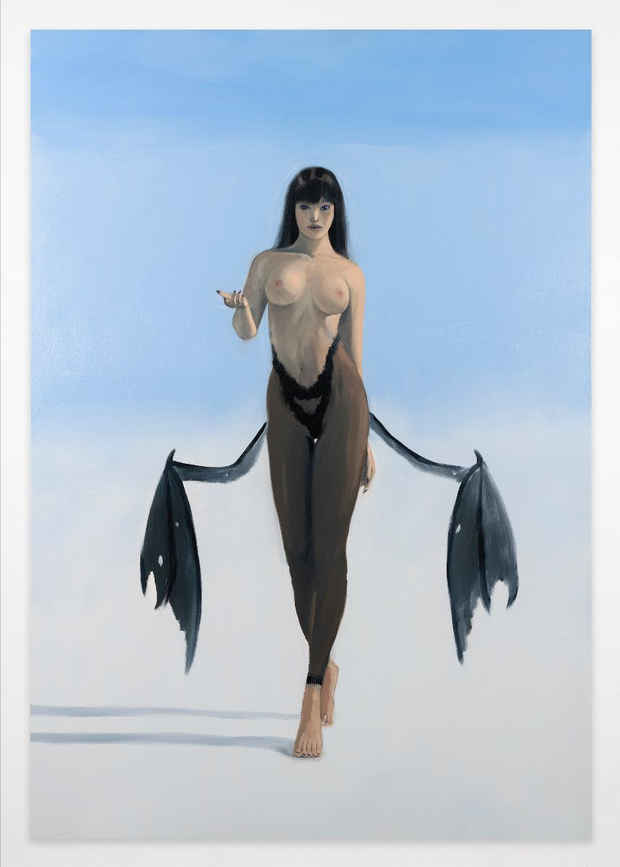Clark Filio “Heaven Ship”
King's Leap

[Image: Clark Filio "The Baleful Ker" oil on canvas, 78 x 54 in.]
This event has ended.
Heaven Ship is the direct translation of Himmelskibet, the title of a 1918 Dutch silent film officially released in English as A Trip To Mars. At the time of its premiere, Europe had been at war for four years and twenty million people had been killed. The film is the first “space opera,” and deals directly with what would emerge in the 20th century as a central question of science fiction: Who or what is “the future” even for?
“The future”, isn’t just the next passage of time, but the design of the world that has yet to be realized. I never watched the movie 1917 that came out last year, but I remember reading a review that examined how the events of the film were unrealistic— a historian pointed out that the routine loss of life in WWI was on such an enormous scale that it wasn’t plausible for the potential endangerment of 1,600 soldiers to trigger the kind of dire concern from military leadership seen in the film. This really stuck with me, and makes A Trip To Mars all the more inspirational for taking the stance that the future belongs to the living.
The importance of taking these kinds of positions cannot be overstated. This is how we design the future: it must first be envisioned. I’m impressed with how easily the right is able to do this, there’s something about the premise of nationalism that activates the impulse to exercise a fantasy of speculative world-building. The liberal decorum of bi-partisan compromise closes the door on this kind of exercise. When we ask ourselves who the future is for, the reactionary says “me” and the liberal says “let’s look at the polls”.
Of course, there’s a spectrum between taking a position and “taking a position”. In June of this year, Marc Glimcher, the president of Pace Gallery, published a public letter addressing the constituents of their program- “We can no longer be content telling ourselves, ‘I’m not racist.’ When innocent people are being strangled by the police, it doesn’t matter whether I consider myself racist or not. If we are not part of the change, then we are empowering the destruction of all principles and ideals we claim to hold dear.”
In July, Glimcher went to the White House with a delegation of industry leaders to meet with Ivanka Trump and Steve Mnuchin to lobby against the capital gains tax on certain sales of art.
This show is about horizons and the future of life and art. I think it’s important that artists take radical positions that engage us in conversations and activities that contribute to a future worth having. We are behind, and I think we need to work where we’re at and envision what kind of artistic life we want and organize ourselves accordingly.
-Clark
Clark Filio (b. 1988) is a Queens-based artist. His figurative oil paintings range from the world-building of fantasy illustration to narrative scenes influenced by television, film, and autobiography. Filio’s commitment to fantasy illustration dates back to an apprenticeship with illustrator/painter Rick Berry. His paintings aresam mcki equally informed by American Impressionists, such as Frank Duveneck from his native Cincinnati, and fan artists found on the website Deviant Art. Filio has recently exhibited at Kimberly Klark, MX Gallery, Magenta Plains, and Greenpoint Terminal Gallery, amongst others. Outside of his studio practice, Filio recently produced the television show How To With John Wilson for HBO.
Media
Schedule
from November 07, 2020 to December 19, 2020
Opening Reception on 2020-11-07 from 13:00 to 19:00